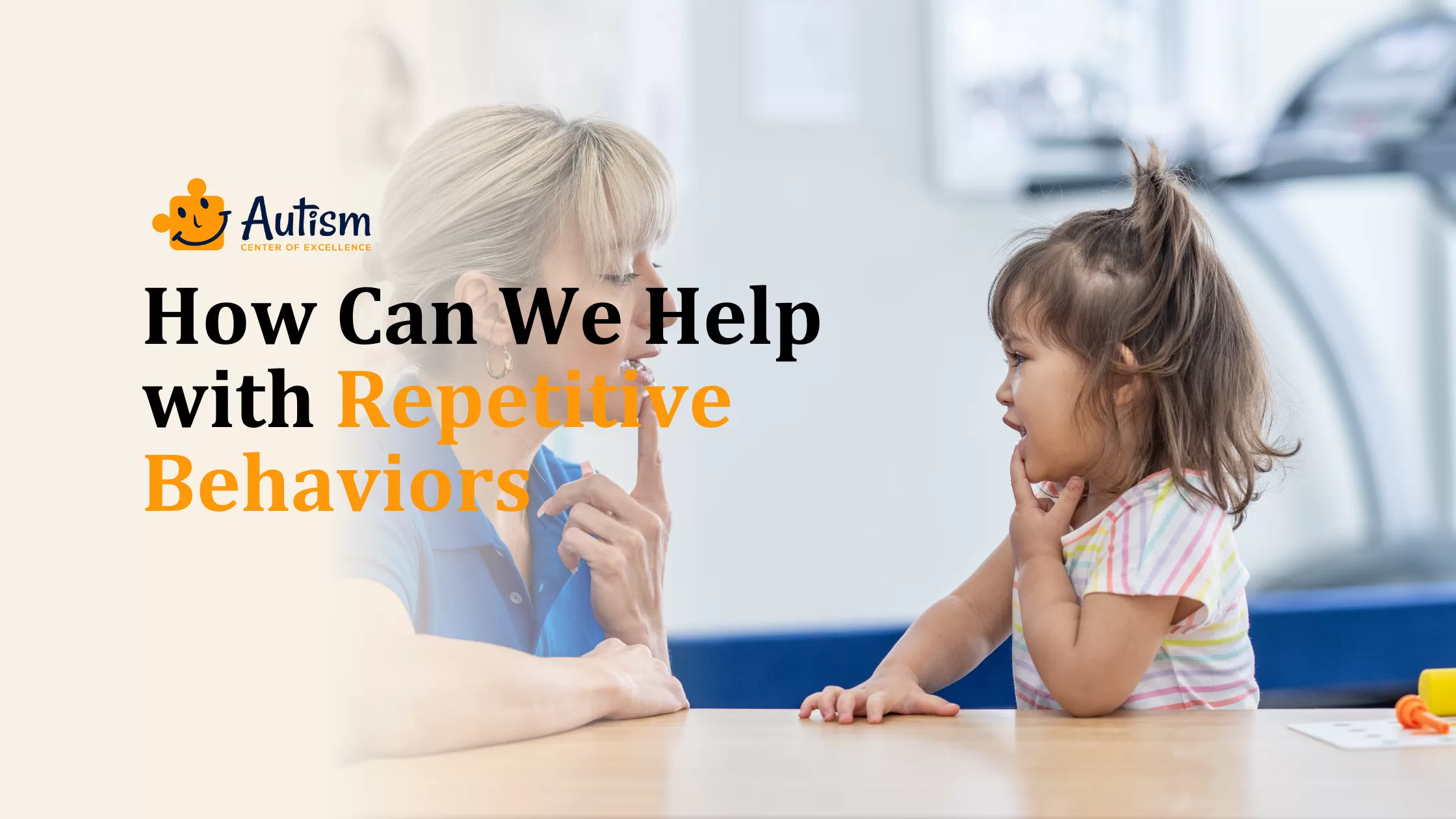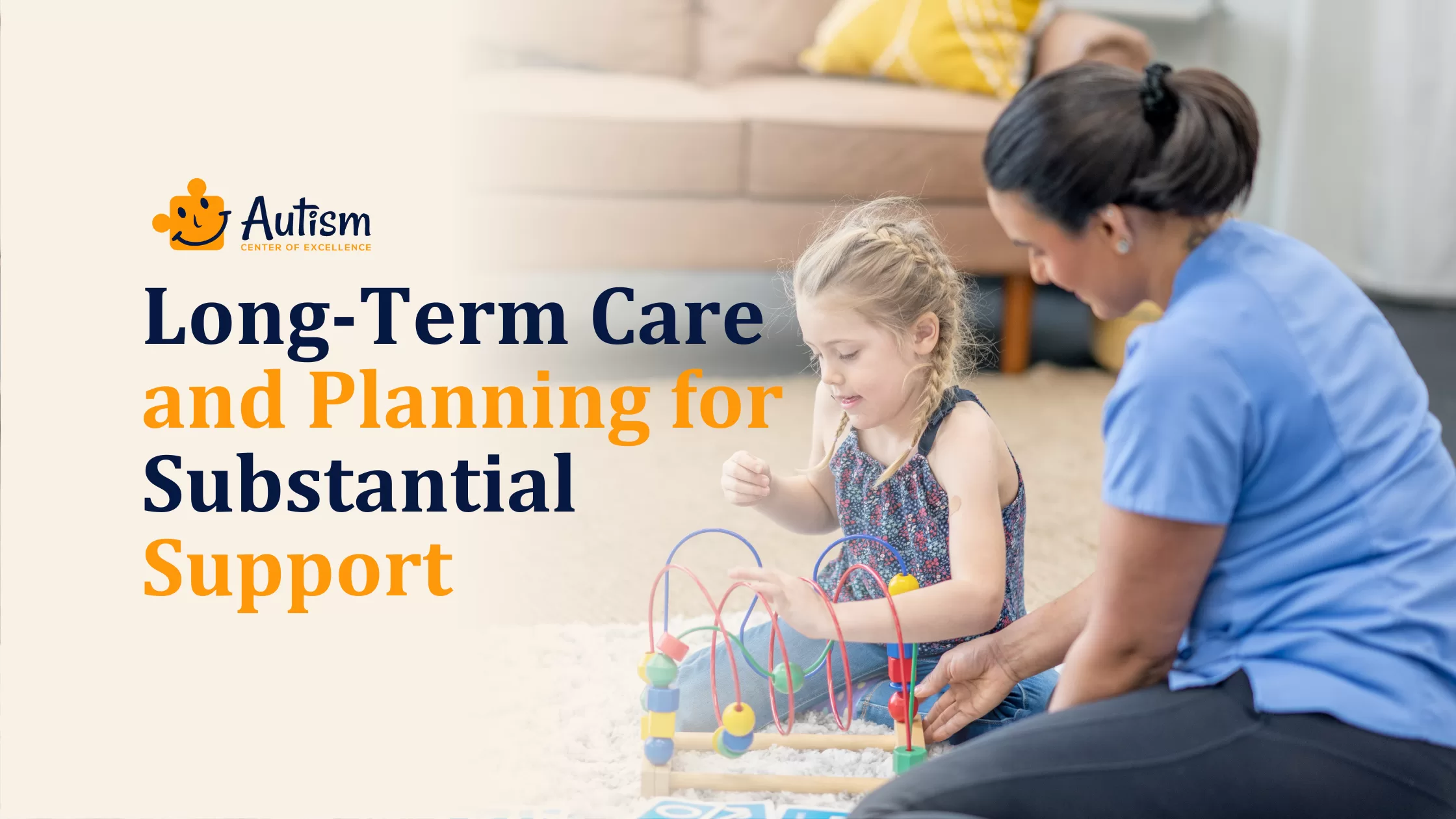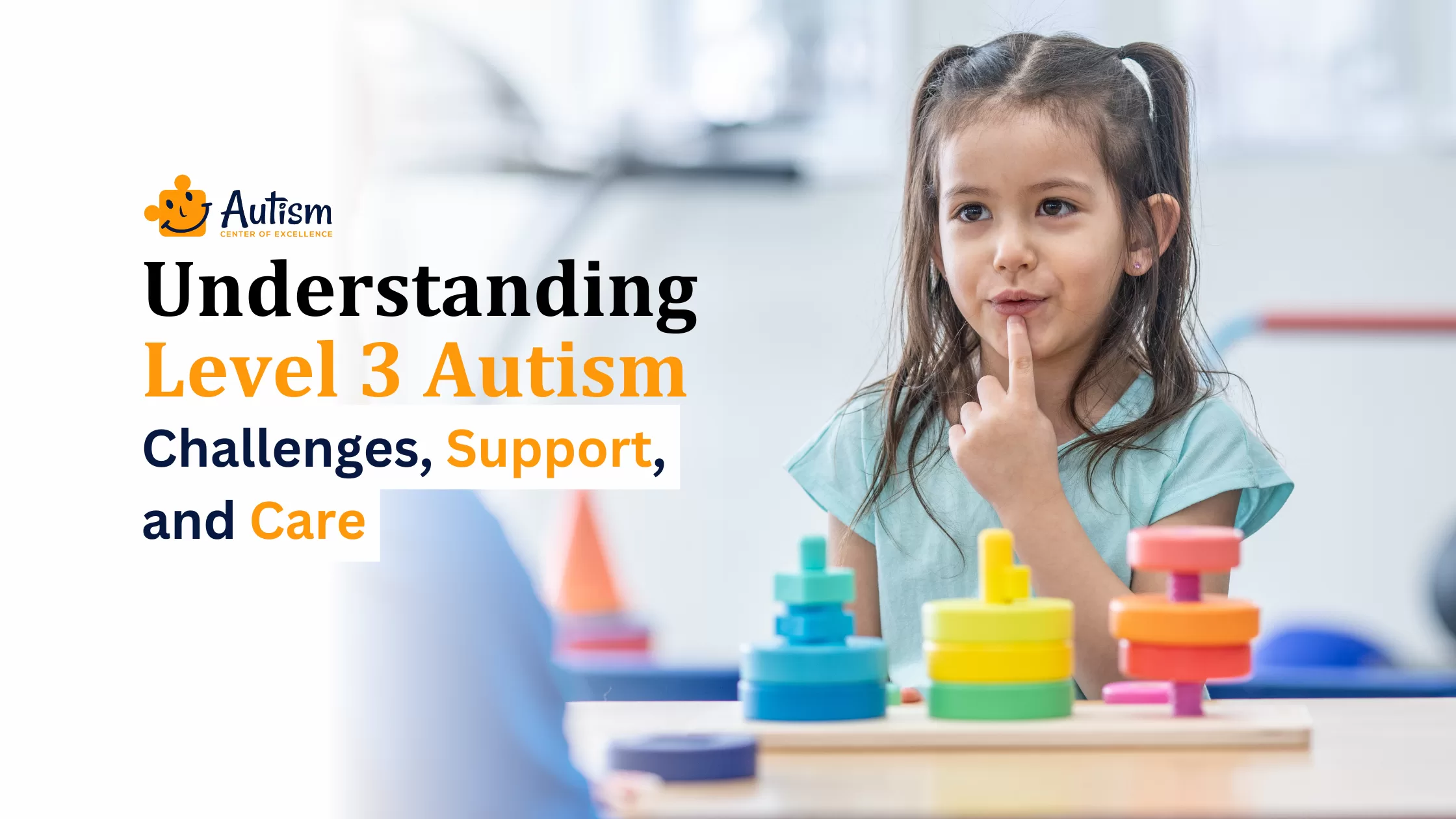Autism is a condition that affects how a person thinks, learns, and interacts with others. People with autism have different needs, and doctors classify autism into three levels. Autism level 3 is the most severe classification of autism spectrum disorder, requiring substantial support for individuals affected. It’s important to understand the challenges that come with Level 3 Autism and learn how we can help those who live with it.
What is Level 3 Autism, the Most Severe Form?
Level 3 Autism is when a person has very serious difficulties with communication and behavior. The DSM-5 defines three levels of autism spectrum disorder (ASD), which classify individuals based on their support needs, highlighting the varying degrees of independence and support required at each level. People with Level 3 Autism often have trouble talking or might not speak at all. They may also repeat the same actions over and over and have a hard time adjusting to changes in their routine.
Doctors use the DSM-5 (a guide for diagnosing mental health conditions) to identify Level 3 Autism. People diagnosed with this level need a lot of help every day in areas like learning, communication, and social skills.
Diagnostic Criteria
The Diagnostic and Statistical Manual of Mental Disorders, 5th Edition (DSM-5), provides the framework for diagnosing Autism Spectrum Disorder (ASD), including Level 3 autism. According to the DSM-5, individuals with Level 3 autism exhibit significant difficulties in social communication and social interaction across multiple environments. They also display restricted interests and repetitive patterns of behavior. To receive a diagnosis of Level 3 autism, these challenges must be severe enough to require substantial support in daily life.
The diagnostic process typically involves comprehensive assessments to evaluate the individual’s behavior and development. Tools such as the Autism Diagnostic Observation Schedule (ADOS) and the Mullen Scales of Early Learning (MSEL) are commonly used to gather detailed information about the individual’s abilities and challenges. These assessments help clinicians determine the appropriate level of support needed for the individual.
Characteristics of Level 3 Autism
Level 3 Autism Spectrum Disorder (ASD) is the most severe classification under the DSM-5, indicating significant challenges in communication, social interaction, and daily living skills. Here are the key characteristics:
👉Severe Communication Difficulties
- Minimal to no verbal communication; may rely on nonverbal methods like gestures or assistive devices.
- Difficulty understanding and using language, even with prompts.
- Struggles with back-and-forth conversation or responding to social cues.
👉Profound Social Challenges
- Limited or no interest in social interactions.
- Difficulty understanding relationships, emotions, and social norms.
- May engage in self-isolation or show distress in social settings.
👉Rigid & Repetitive Behaviors
- Intense fixation on specific interests or routines.
- Repetitive movements (rocking, hand-flapping, spinning).
- Extreme resistance to change in environment or routine.
👉Sensory Sensitivities
- Hypersensitivity or hyposensitivity to sounds, textures, lights, or smells.
- May exhibit extreme distress over sensory input or seek intense sensory experiences.
👉Significant Daily Living Support Needs
- Requires full-time assistance for personal care, communication, and safety.
- Struggles with tasks like dressing, eating, and hygiene.
- May need a highly structured environment to function optimally.
👉Intellectual and Cognitive Differences
- Some individuals may have co-occurring intellectual disabilities.
- Others may have scattered skills, excelling in specific areas while struggling in others.
👉Behavioral and Emotional Regulation Challenges
- Frequent meltdowns or shutdowns due to overwhelming situations.
- High levels of anxiety, aggression, or self-injurious behaviors.
- Difficulty adapting to unexpected changes.
Since Level 3 autism requires substantial support, early intervention, personalized therapies, and a supportive environment are crucial for enhancing quality of life. 💙

Challenges Faced by Individuals with Level 3 Autism Requiring Substantial Support
1️⃣Communication Problems: People with Level 3 Autism may not be able to speak, or if they do, they might have a limited vocabulary. They often have difficulty understanding what others are saying. They may use pictures, gestures, or technology to communicate instead of words. Individuals with Level 3 Autism often exhibit reduced or abnormal responses to social cues.
2️⃣Behavioral Issues: It can be hard for them to handle changes or new situations. Individuals with Level 3 Autism often experience difficulty coping with changes in routine. Some may repeat the same movements, like rocking or hand-flapping. These individuals experience extreme difficulty coping with changes, which can lead to distress. Sudden noises or bright lights may overwhelm them, leading to meltdowns.
3️⃣Learning and Thinking Difficulties: These individuals often find it difficult to learn in a regular classroom. They may have trouble understanding certain concepts or instructions. They need teachers and caregivers to adapt lessons and daily activities to their abilities.
4️⃣Social Isolation: Making friends and interacting with others can be very challenging. They may not understand facial expressions, body language, or emotions, which makes it harder to connect with others. This can leave them feeling isolated, even when surrounded by people.
5️⃣Behavioral Challenges: Behavioral challenges are a significant aspect of Level 3 autism. Individuals may exhibit severe behaviors such as aggression, self-injury, and eloping (wandering away from safe environments). These behaviors can stem from frustration, sensory overload, or physical discomfort. For some families, the severity of these behaviors can make it unsafe to live with an autistic teen or adult. Self-injurious behaviors, such as head-banging and pica (eating non-food items), are more prevalent among those requiring substantial support.
6️⃣Cognitive and Sensory Challenges: Cognitive and sensory challenges are also prominent in individuals with Level 3 autism. They often struggle with social communication skills and exhibit repetitive behaviors. Understanding and using spoken language can be particularly challenging, and they may not be aware of the people around them. Sensory processing issues are common, with individuals either being overly sensitive or not sensitive enough to stimuli such as light, sound, smell, taste, and touch. These sensory dysfunctions can significantly impact their daily lives and interactions.
Join Our Weekly Newsletters!
Subscribe now to stay updated with our latest email updates.

How Can We Help Improve Social Communication Skills?
- Therapies for Support: People with Level 3 Autism often benefit from different types of therapies. For example:
- Speech therapy: can help improve their communication.
- Occupational therapy teaches them important daily skills like dressing or brushing their teeth.
- Applied Behavior Analysis (ABA) helps with learning and behavior. Individuals with Level 3 Autism often experience difficulty switching between tasks, which can be addressed through structured routines and targeted interventions.
- Specialized Education: These individuals often attend special education programs that are designed for their needs. Schools may create something called an Individualized Education Plan (IEP), which outlines the best way to help the student succeed. Some may also use technology to help them learn and communicate.
- Managing Behavior: Routines and structure are important for people with Level 3 Autism. Sticking to a regular schedule can help reduce their anxiety. Caregivers may use calming techniques or provide sensory tools, like weighted blankets or noise-canceling headphones, to manage meltdowns.
- Support for Families: Families of individuals with Level 3 Autism also need support. Caring for someone with high needs can be difficult and stressful. It’s important for parents and caregivers to have access to community resources, counseling, and support groups to help them manage these challenges.
Treatment and Interventions
While there is no cure for autism, various treatments and interventions can help individuals with Level 3 autism manage their symptoms and improve their quality of life. Key interventions include:
- Applied Behavior Analysis (ABA) therapy: Focuses on improving specific behaviors and skills through positive reinforcement.
- Occupational therapy: Helps individuals develop daily living skills and manage sensory processing issues.
- Speech therapy: Aims to enhance communication skills, whether verbal or through alternative methods.
- Physical therapy: Addresses physical challenges and improves motor skills.
- Medications: Can be prescribed to manage anxiety and other related issues.
- Sensory integration therapy: Helps individuals better process and respond to sensory information.
These interventions, tailored to the individual’s needs, can significantly improve their ability to cope with daily challenges.

Creating a Supportive Environment
Creating a supportive environment is crucial for individuals with Level 3 autism. This involves:
- Minimizing sensory stimuli: Reducing exposure to loud noises, bright lights, and other sensory triggers.
- Providing a predictable daily routine: Consistency helps reduce anxiety and improve coping skills.
- Using visual aids and communication tools: Visual schedules, picture exchange systems, and communication devices can aid in understanding and expressing needs.
- Offering opportunities for physical activity and exercise: Physical activities can help manage energy levels and reduce stress.
- Providing access to alternative forms of communication: Ensuring that individuals have the tools they need to communicate effectively.
- Creating a safe and comfortable living space: A well-organized, calm environment can significantly enhance their quality of life.
By understanding the diagnostic criteria, characteristics, and challenges associated with Level 3 autism, individuals and families can better navigate the diagnosis and develop effective strategies for support and intervention.
Long-Term Care and Planning for Substantial Support
As individuals with Level 3 Autism grow older, they will need continued care and support. Some may live in special homes where caregivers are always available, or they might attend day programs that teach life skills and provide social opportunities. Planning for the future is important to ensure they have a safe, supportive environment when their parents or guardians can no longer care for them.
Frequently Asked Questions & Answer
What Are the Main Challenges Faced by Individuals With Level 3 Autism?
People with Level 3 Autism often encounter profound challenges, including difficulties with communication, repetitive behaviors, and sensory sensitivities. They may have trouble understanding social cues and expressing their needs, leading to frustration and behavioral issues. Additionally, they might face challenges in adapting to new environments or changes in routine, further complicating daily life.
How Do Sensory Issues Affect Individuals With Level 3 Autism?
Sensory issues can significantly impact individuals with Level 3 Autism, as they may be hypersensitive or hyposensitive to sensory input. This can lead to discomfort or distress in environments with loud noises, bright lights, or strong smells. Understanding these sensitivities and adjusting environments accordingly can help reduce stress and improve quality of life.
How Can Routine and Structure Help Manage Level 3 Autism?
Routine and structure are crucial for individuals with Level 3 Autism, as they provide predictability that can reduce anxiety and improve behavior. Consistent daily schedules help individuals understand what to expect, making transitions smoother and fostering a sense of security. Visual schedules and clearly defined activities can further support this need for structure.
Conclusion
The Autism Center of Excellence is dedicated to supporting children aged 2 to 14 years through a comprehensive suite of services tailored to meet diverse needs. Offering both in-home and center-based environments, the center ensures accessibility and convenience for families.
Please Note: The content of this blog is for informational purposes only and should not be considered a substitute for professional medical advice, diagnosis, or treatment. Consult a qualified health care professional for personalized guidance tailored to your specific situation.

Bhavika Bhasin
Bhavika Bhasin is the Research and Marketing officer at AutismCOE. She works with children and adults with ASD. Her clinical research includes evaluating various available autism screening and diagnosis methods and their efficacy. She is currently developing a novel screening exam that is indicated to be more accurate than the existing available exams. She is also writes articles papers for various publications.


